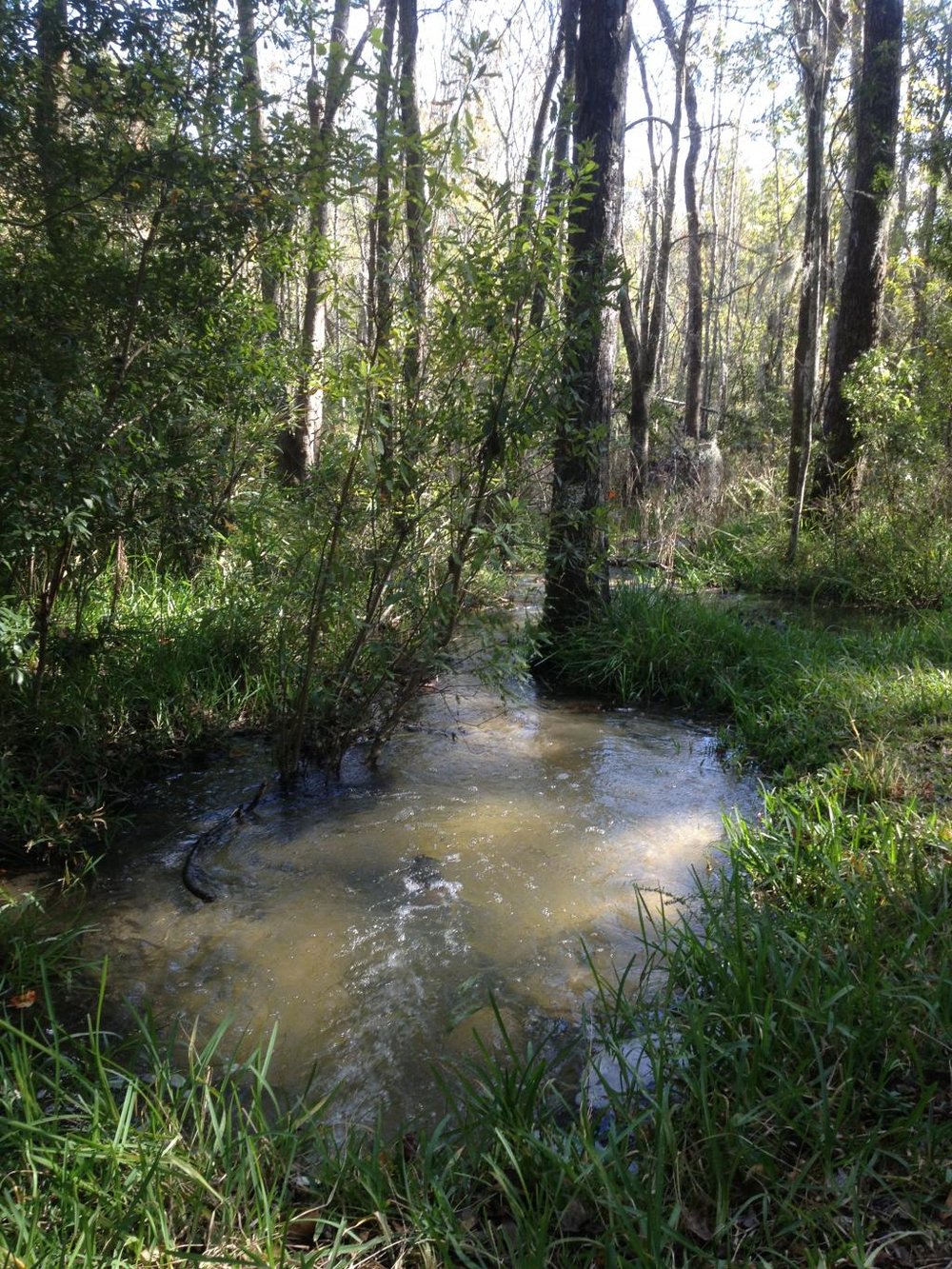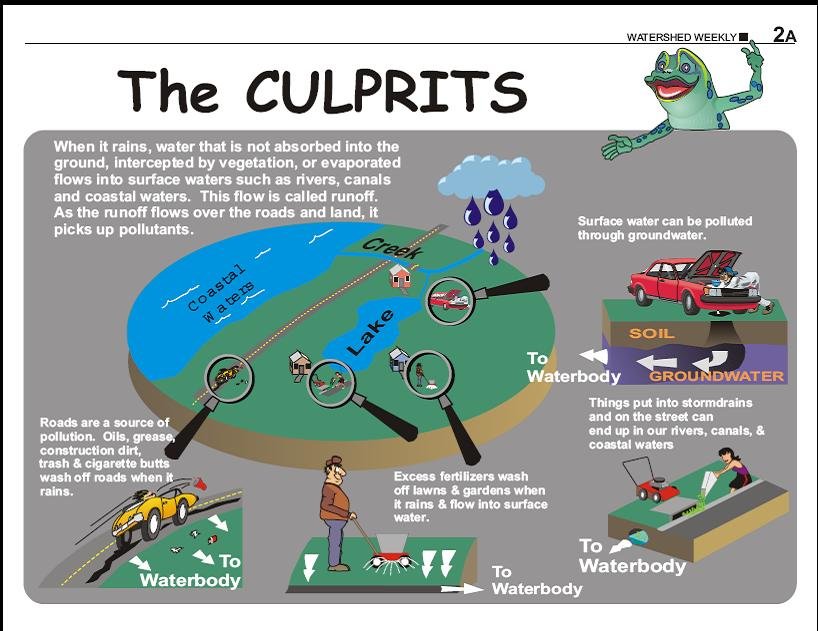4. Wetlands & Watersheds


Look and listen carefully – do you see or hear water running? The drainage ditch running under the path flows most of the year from the lagoon at WCP into the Goose Creek Reservoir, which borders the park. Like most storm drains in the lowcountry, this one carries water from the park directly into our local waterways. South Carolina’s coastal waterways are some of the most extensive and pristine in the Southeast, and all of us enjoy or depend on them in one way or another. Whether swimming, fishing, boating, enjoying local seafood, or simply drinking clean water in our homes – our coastal waterways support us in many ways.
You can imagine water running out of our yards, driveways, parks and roads may be carrying many other things along with it. Fertilizers, pesticides, even pet waste can wash away during a heavy rain into a nearby storm drain. From roads and driveways oil, tire and exhaust residue and litter can wash into nearby storm drains. All of these can cause damage to our waterways – sometimes resulting in fish kills, temporary bans on seafood harvesting, even swimming.
At CCPRC we understand that to be good stewards of your green spaces, we must make every effort to protect the waterways as well. We minimize the amount of fertilizers and pesticides used in county parks, find natural alternative methods to pest control, maintain healthy buffers of plants, encourage pet waste clean-up, and keep our parks litter-free – to make sure the water that falls from the sky is as clean as possible when it enters our local waterways. These are all practices you can employ in your own neighborhoods and yards to make a positive difference. Join us in a community-wide effort to protect our Lowcountry waterways at home and in your parks.
PHOTO CREDIT: Stormwater diagram thanks to Brunswick County, GA Department of Stormwater Treatment